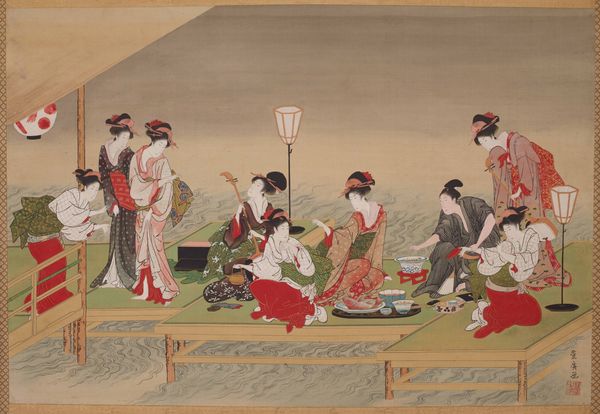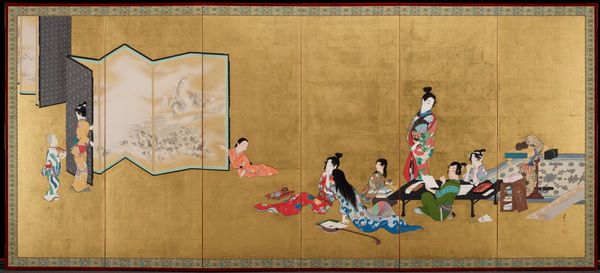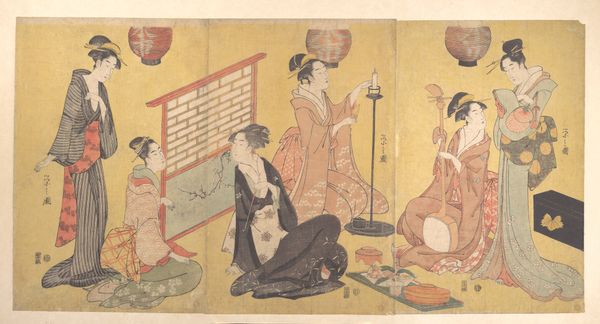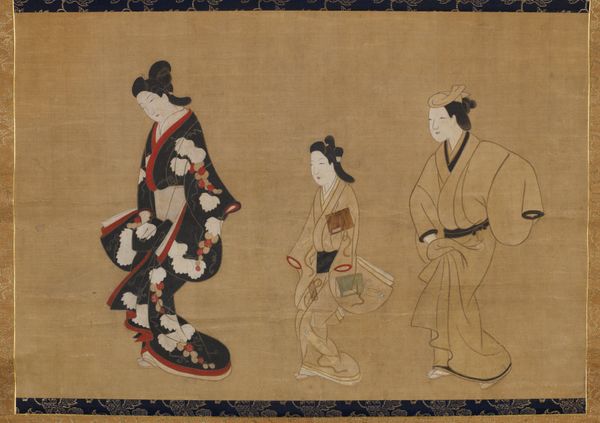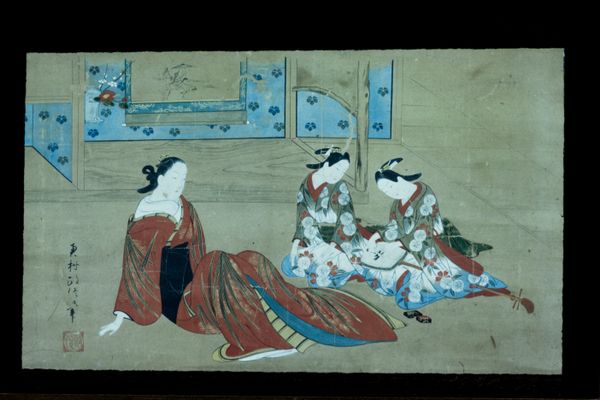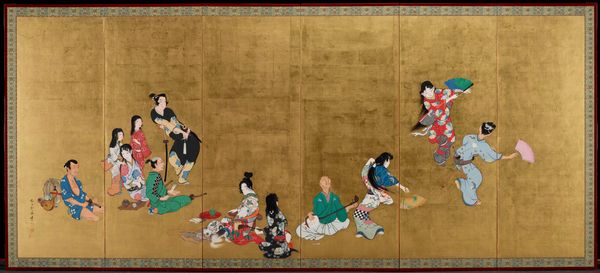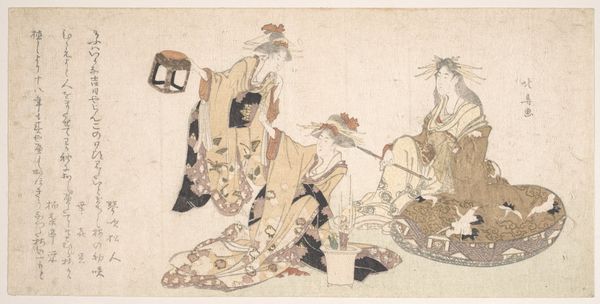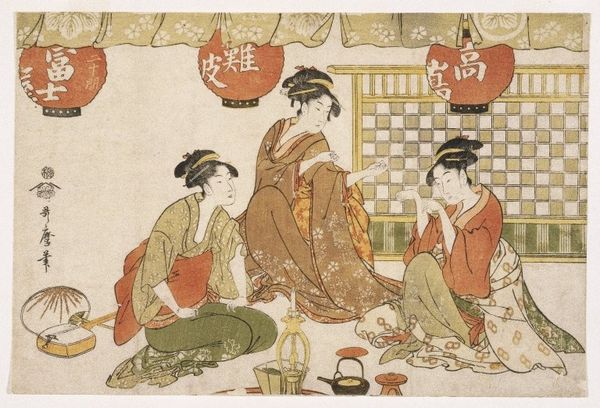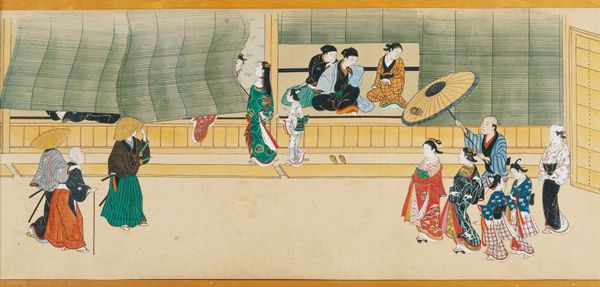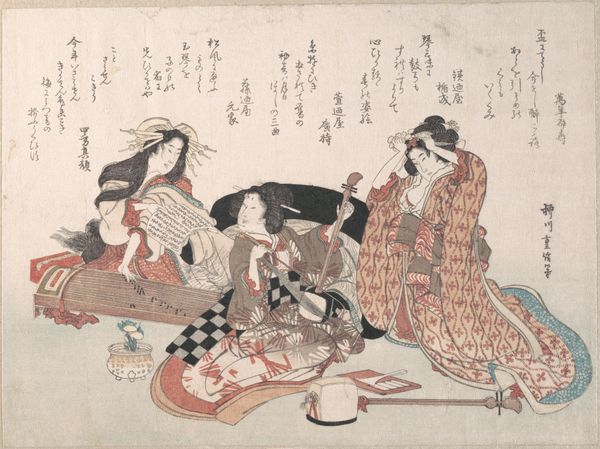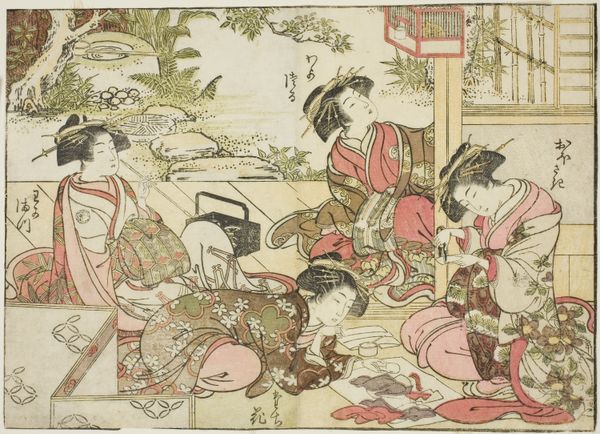
Musical Party c. late 17th century
0:00
0:00
watercolor, ink
#
asian-art
#
ukiyo-e
#
folk art
#
watercolor
#
ink
#
group-portraits
#
genre-painting
Dimensions: 11 1/2 × 18 13/16 in. (29.21 × 47.78 cm) (image)
Copyright: Public Domain
Editor: This is "Musical Party" by Hishikawa Moronobu, made around the late 17th century, using ink and watercolor. There's a peaceful, almost formal quality to this gathering of people, very contained. What strikes you most about the piece? Curator: The enduring iconography of leisure is compelling here. Note the Kokin Wakashū allusion – that round red sun shape against the blossoming white plum trees on the screen. This motif acts almost like a signature for a refined gathering; a signal to the viewer that these individuals appreciate beauty, education and tradition. Editor: That's interesting, I didn't notice the allusion at first! It really does set a tone of cultivated taste. Curator: Indeed! It’s more than mere decoration; it evokes centuries of poetic tradition tied to that screen. Look too at how their robes, particularly the deliberate placement of repeating textile motifs, function. What might their patterned garments express? Editor: Perhaps that pattern relates to their social status or maybe a family affiliation? I imagine each specific robe carries individual weight beyond just surface decoration? Curator: Precisely. The arrangement, with musicians facing the predominantly female audience, feels staged, ritualistic almost. The sonic and visual components blend to define pleasure and accomplishment. We are presented not merely with music, but an aspirational scene, something timeless about pursuing refinement. Editor: I appreciate how you linked the scene to wider cultural markers; I was focused on the figures alone. Thanks for broadening my view. Curator: My pleasure; iconography helps decode shared meanings, inviting us to remember collectively.
Comments
minneapolisinstituteofart almost 2 years ago
⋮
Five fashionable prostitute and a male figure playing the shamisen gather before a folding screen painted with an autumnal scene of a red sun and white chrysanthemums. One of the elegant prostitutes also plays a shamisen, while two others read books. Red and white Chinese characters on the garment of the prostitute at right read “flower” and “cherry blossoms,” age-old symbols of the ephemerality of beauty and youth. Two small red seals on the far right of the folding screen within the painting identify the artist as the early ukiyo-e master Hishikawa Moronobu.
Join the conversation
Join millions of artists and users on Artera today and experience the ultimate creative platform.


